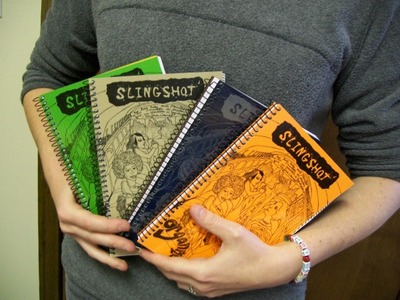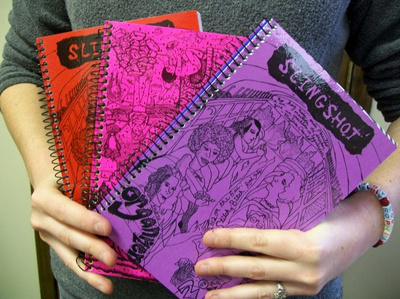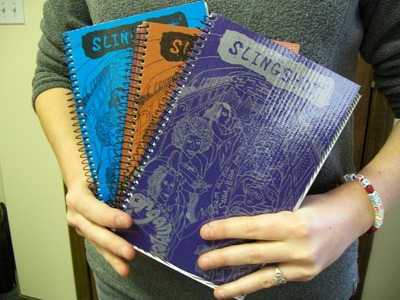We now have a GIFT WRAP option! And we’ve made a video about it!
Microcosm now giftwraps! from Cantankerous Titles on Vimeo.
Microcosm now giftwraps! from Cantankerous Titles on Vimeo.
Devoted to trainhopping and train culture, Railroad Semantics describes the sights, sounds, successes, and defeats of riding around the U.S. in near-poetic detail. This first issue explores a round-trip, early-spring train ride from Portland to Pocatello and back, as well as a long, winter ride to Eugene. It features a wide array of articles on railroads and rail-related activity, letters, postcards, and is full of absolutely gorgeous photographs of landscapes and hobo graffiti! A poetic sense of adventure captured in words, pictures, and scenic vistas!
Available now! Right here! Yow!

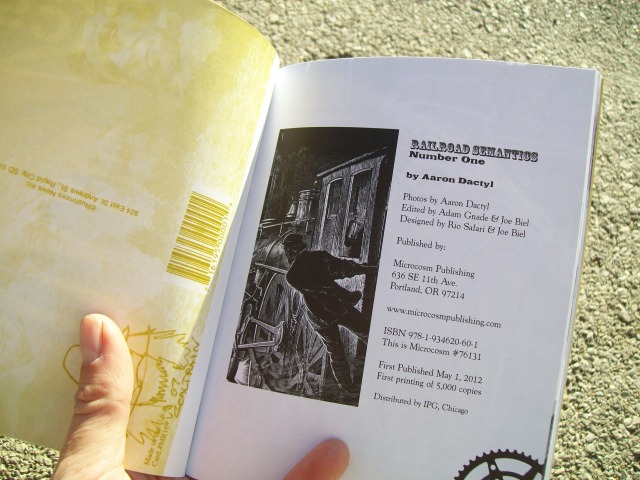
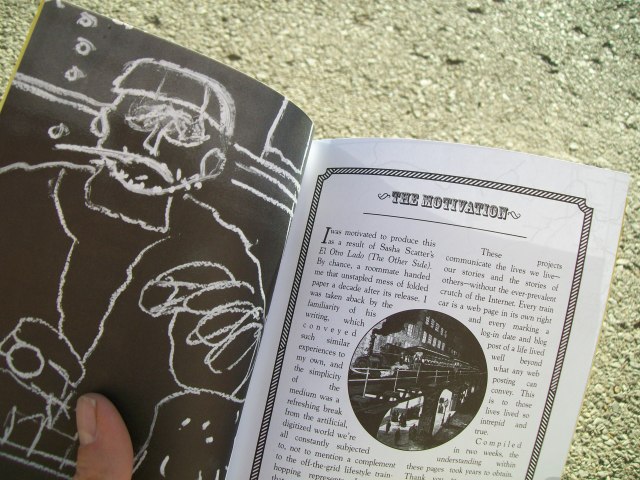
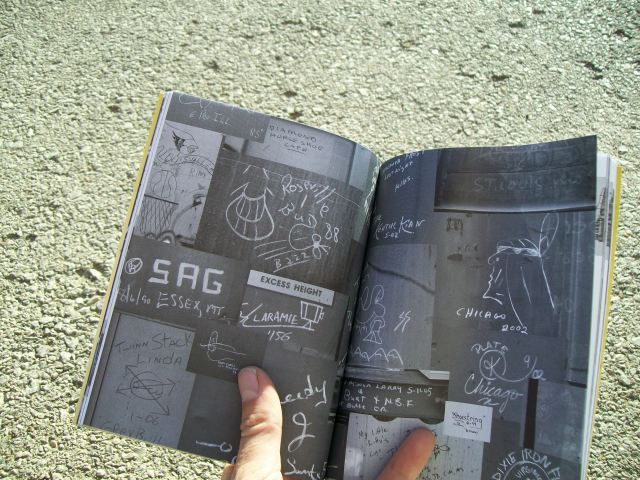
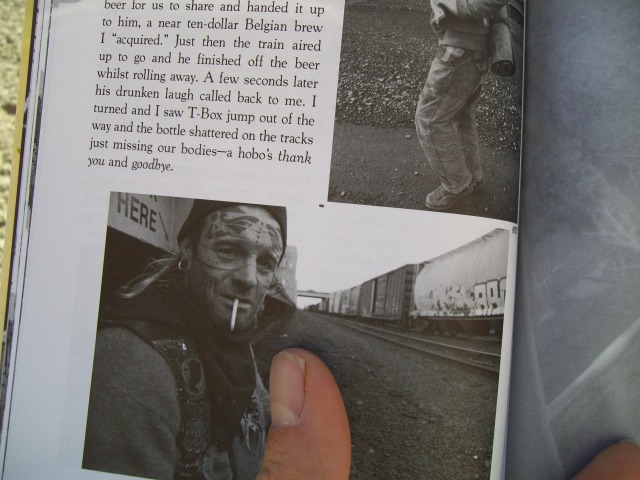
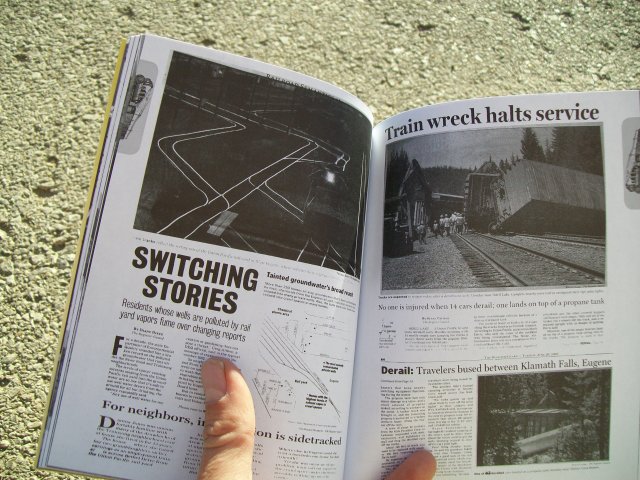
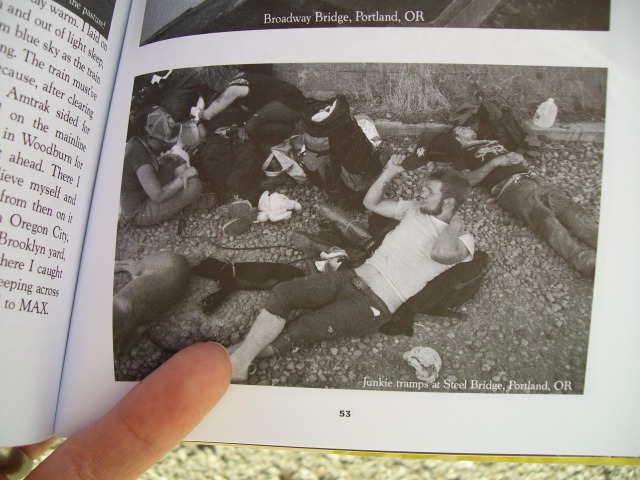
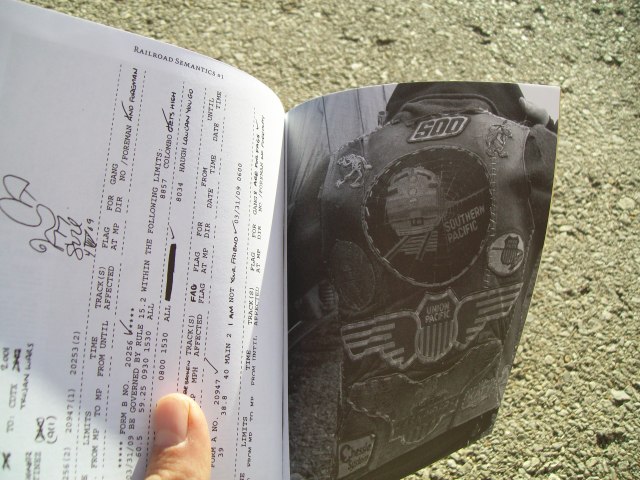

Just in time for the release of the new Muppet film, we interviewed Stitching Together‘s author/artist, Ed Choy Moorman! Stitching Together is a collection of Muppet-related comics—a series of shorties backing up the zine’s showpiece: an epic look at the life, career, and death of Jim Henson. It’s a wide-spanning portrait of the dude, from youth and young manhood, to hittin’ it big in the 1970s with most sensational, inspirational, celebrational Muppetational Muppet Show (and beyond). The final piece in the zine, a pilgrimage to Henson’s former home (as told in comic frame Polaroid snapshots) is heartbreaking and smart and bittersweetly funny.Published by Bare Bones Press, Ed Choy Moorman’s comics are beautifully drawn (think Nate Powell meets Fart Party) and capture all the sweep and movement of one man’s extraordinary life.
Q: So, how did the Stitching Together zine come about?
A: I made the center story, the tiny bio of Jim Henson, as a response to an assignment for a nonfiction comic in Zak Sally’s class at MCAD. Later, I realized I had been doing work referencing the Muppets for years, and threw them in, along with some other stuff, in the first version of the zine. For the second printing I changed the title, redid the cover (and again for the most recent version), threw out one piece and added the story about visiting Henson’s hometown, which had
happened after the first printing.
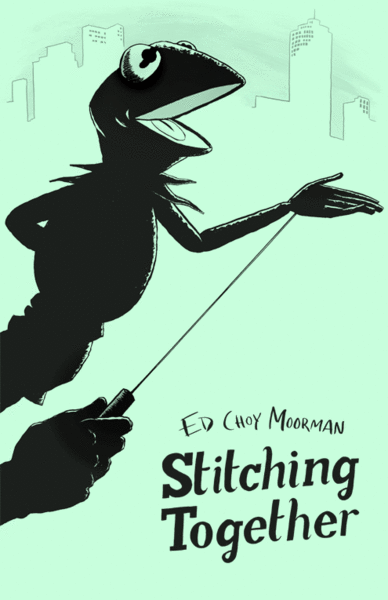
Q: When you say you’d been referencing the Muppets for years, where else did Muppet stuff pop up in past work?
A: In my first comics class at MCAD, taught by Barb Schulz, we had an assignment to do a biography of a fictional or real person, out of five choices voted on by the class. One student threw out Dr. Bunsen Honeydew, Beaker’s tormentor, and I drew a page on him. I used a friend’s childhood crush on Kermit as a detail in a coming-of-age story–but from an older perspective, with the character talking about the childhood crush. If I did it now, I’d show the crush developing.
And I did other stuff that referenced them, but it was hoity-toity and embarrassing.
Q: Are there any Muppets who seem like folks you know in your life?
A: The old blue-collar Chicago guys at my old letterpress studio job reminded me of Statdler and Waldorf. I can be Fozzie, self-conscious and eager to please. I’ve known Miss Piggys, and I love them.
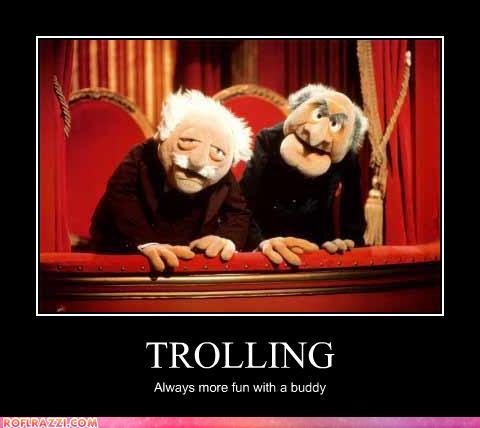
Q: What’s your favorite Muppet movie?
A: I like Muppets Take Manhattan for its balance of gags and lonely, quiet bits.
Q: Any you really didn’t like? I saw Muppets from Space recently and it was a massive letdown.
A: It was for me, too, though I wasn’t expecting much. Kermit fell under the Mickey trap–the team working with him drained the life out of him and made him a milquetoast. In his original version, Kermit would at times get angry and butt heads with the other Muppets when things would blow up. If his character can’t have human reactions and drives, he’s not Kermit. There is one later Muppet movie that I like, though, Kermit’s Swamp Years.
Q: You excited to see the new Muppet movie that came out a couple days ago?
A: I’m looking forward to it, it sounds like it should be fun, and it comes out on my birthday. That said, I think of any Muppet stuff following the deaths of Henson and Richard Hunt and the thinning out of the original teams as not the Muppets. “Queen & Paul Rogers” isn’t Queen, after all.
Q: I hear ya. Did you ever see the original Muppet sketches on the old Saturday Night Live? That shit was dark! And druggy.
A: I haven’t! As anyone who saw that touring museum show can say, their body of work is amazing, in that they produced so much great stuff, experimented constantly, and most of it remains uncollected. I’d especially like to see Henson’s experimental films like Time Piece collected on a DVD.
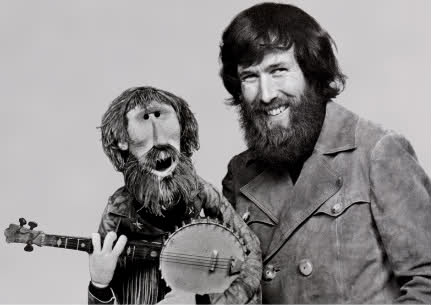
Q: What’s next for you, zine-wise?
A: I’m finishing up a comic adaptation of James Joyce’s “Araby” from Dubliners for an anthology called The Graphic Canon. I’ll also put out that story as a minicomic, and pad it out with some new stuff about Joyce’s dirty letters. I’m also collaborating with Sam Sharpe (I wrote, he draws) on a comic for 2D Cloud’s anthology Little Heart, about a transgendered kid who finds a book in the library stacks that knocks their socks off. I’m also doing some other stuff that I can’t talk about yet.
Q: I love Joyce. Those letters are great too. I mean, it’s not surprising if you’ve made it to Molly’s soliloquy in Ulysses or Bloom’s episode at the baths but I think they still catch folks off guard. When will the Sam Sharpe colab be out? Looking forward to that. Sounds outstanding.
A: If a beautifully-worded fart fetish doesn’t catch you off-guard, I’m impressed. Thank you. I’m excited too, Sam’s wonderful. I’m not sure when. Spring maybe. I’ll be announcing it on @edchoymoorman on twitter and I’m sure 2D Cloud will too.
Look for Moorman’s Stitching Together here.
The good Ayun Halliday recently released the 48th (!) issue of her fantastic, illustrated per-zine, The East Village Inky. We decided it was high time to catch up with her and talk zines, books, and awards…
Q: When you first started doing The East Village Inky did you think it would go on for as long as it has? Most zine-makers do not make it to issue 48. Totally crazy and exciting.
A: For someone who loves ephemera, I’m pretty bad at conceiving of things, projects, and people as ephemeral. Likewise, for someone who’s ducked out of an entire book’s worth of day jobs, I’m pretty bad at quitting. When I love something, I want it to last forever, and shy away from any assumptions that it won’t. There’s a precedent, too. I somehow managed to write and perform in a late night, low budget show for nearly a decade, only stopping when the arrival of my first child took the matter out of my hands.
The autobiographical nature keeps the zine fresh for me, and hopefully for the long time readers as well. It’d be a drag to have to keep making the same three jokes, a la the Family Circus. Oh hell, did I just reinforce the idea that it’s a ‘parenting zine’? Because it’s not. It’s a zine made by someone who had little kids, who now, coincidentally, has big kids. I recently made a time progression video of all 48 covers for a zine reading at the Lower East Side Girls Club with Fly and Cristy Road. It made me appreciate how much life has been crammed into those 1920 quarter-sized pages, even if the whole thing is viewable in the same amount of time the Ramones took to burn through Judy is a Punk. I’m glad to have documented stuff I would have otherwise forgotten, and to have documented it in this particular, handwritten, illustrated format.
http://www.youtube.com/watch?v=UyApDgml9YA&feature=youtu.be
Q: What was going on in your life when you started the zine? Why did you decide to do it?
A: I was a year into motherhood and the wheels were about to come off mentally. I was missing my late night, low budget theater lifestyle – the flip side of doing a long term project is the danger you’ll feel unmoored when it comes to an end. I needed a creative project that could reach a small audience of strangers, whilst allowing for the constant companionship of a one year old. I’d wanted to make a zine for quite some time, but had never found a subject I felt would sustain more than a single issue. Then along came Inky and bingo! Exploring New York City as one whose ability to participate in its many pleasures was defined by my maternal situation provided the initial sustaining subject. It also enriched the experience of early motherhood, getting me out of my funk by providing a sense of purpose, a deadline, self-generated assignments, and lots of daymaking mail from friendly strangers.

Q: Last year you put together the Zinester’s Guide to NYC. Has your life changed in any way? You plagued with annoying questions from the great unwashed? Free meals at your favorite NYC eateries?
A: Oh yeah, I’m a total big shot now. I think its most lasting legacy for me is a compulsion to check out and share every new, cheap, oddball pleasure I stumble across. I am also stricken when I learn of one of our listings closing, or moving, or reopening under a different name. Still, I stand by my conviction that one cannot truly experience a new city when one’s eyes and mind are blinkered by a smartphone addiction. Presumably ZG2NYC users are resourceful enough to do a little online double checking before leaving home. I’ll bet the hardiest among them are game to explore nearby frontiers should they arrive to find that one of our greatest-sounding listings has mysteriously morphed into a nail salon. Speaking of which, I’m glad to have historic record of these places as they go out of business, because I swear, I walk down my old street, 9th between 1st and A, and cannot for the life of me recall what most of those storefronts used to be…
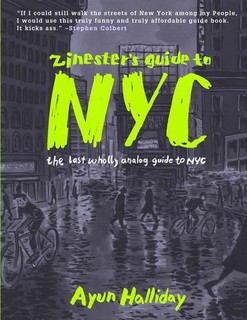
Q: A little bird told us the ZG2NYC recently won an award. DO TELL.
A: Oh yeah, that was a real boost! Like Tsegaye Kebede and Mary Keitany, the ZG2NYC is a bronze medalist. In our case, it’s compliments of the Society of American Travel Writers’ Lowell Thomas Awards, in the guidebook category. It’s gratifying that the first place winner was published by Lonely Planet. It’s even more gratifying that I have some fresh credentials to justify my inclusion when my travel writer buddies invite me to hang with them at Otto’s Shrunken Head. No Touch Monkey! and Other Travel Lessons Learned Too Late was beginning to feel like a very old fake ID, given that it was published in 2003.

Q: What’s next for you, zine-wise, book-wise, fun-times-wise, family-wise, etc-wise?
A: We’re getting the bug to travel again in that rambling, low budget way. It’s all very embryonic right now, a challenge to coordinate with the New York City public school calendar, but it’s a far more appealing prospect than shopping for real estate, no matter how beat the rental apartment we’ve inhabited for 12 years now becomes. Zine wise, I’ve been hosting an East Village Inky Resubscription Round Up, trying to reconnect with everyone who ever let his or her subscription lapse (or at least since I began keeping computerized records). It’s worked out staggeringly well thusfar, even if I did get myself banned from sending out friend requests on Facebook for a few days. It’s kind of the zinely equivalent of renewing one’s vows. I’m also working on a couple of books, and toying with the idea of a mass new project involving the NYC subway and books (as opposed to e-readers). More on that later, I hope.
Check out the 48th issue of Inky here. Check out the Zinester’s Guide to NYC here.
We are so stoked on Nathalie VanBalen’s vegan Thanksgiving zine, Happy Thanksliving! It’s a coloring book-style zine. It’s pro-animal. It’s super friendly and super cute and totally essential for this year’s cruelty-free Thanksgiving.
We talked to Nathalie about veganness, zine-making, and her other book, the equally awesome vegan children’s book Garlic-Onion-Beet-Spinach-Mango-Carrot-Grapefruit Juice. See Nathalie’s responses below. See Nathalie’s book and zine here.
Q: Okay, to start off, tell us a little bit about how the zine came to be. When was it and what were you doing in your life when you first got the idea for Happy Thanksliving?
A: I work at a school here in Nashville with k-3rd graders, and they are all wild about my made-to-order coloring sheets. (“Ms. Nathalie, do you know how to draw a mama slug scuba diving with her toddler slug?”) I think they’re really fun to draw and I have wanted to make some kind of coloring book/zine. In mid-October I started thinking about the holidays, and Thanksgiving can be a tough one. I have many warm, fuzzy, family-loving feelings about the holiday, but Thanksgiving also facilitates and represents so much violence. I thought, “Wow. The world really needs more veg-themed Thanksgiving books for kids.” So I sat down after dinner and wrote the Happy Thanksliving! poem. I love to rhyme and it all came out easily. I was really feeling it. I cancelled all of my plans for a week and made the whole thing. I listened to tUnE-yArDs, old-time music, and lots of vegan podcasts. I did some research on turkeys and Indigenous peoples. I took breaks to dance.
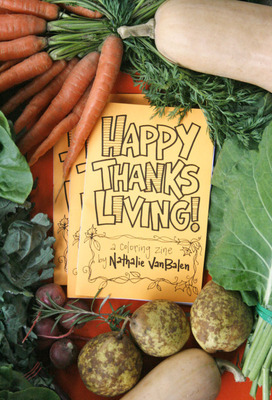
Q: We really like how you framed pro-animal/cruelty-free stuff in a sweet, good-hearted, friendly way. It’s in no way alienating and I think that’s the kind of stuff that wins the non-vegans and non-vegetarians over. Was this a conscious thing from the beginning?
A: Yes. I want to make things that raise important questions and spark dialog. At times I am overwhelmed with pain for oppressed animals. While I certainly think there is an outlet for anger, sadness, and frustration, I see that kids respond well to vibrant, inquisitive, creative compassion. When I made Happy Thanksliving! I wanted to express that we don’t miss out when we choose non-violence; instead, our celebrations become more meaningful and full of life.
Q: When did you go vegan? How did it happen?
A: In elementary school there were times when I felt really uncomfortable with the idea of eating animals. I would try going vegetarian, but it never stuck for long. As a teenager I began learning about factory farming and decided to stop eating animals for good. My parents (who are now mostly vegan) supported my choice, but living in suburban Ohio I didn’t have many resources. As I entered my college years my compassion grew and I was given more tools for thinking critically about the world around me. I saw connections between violence towards animals and other forms of violence. I started buying and preparing my own food. I could no longer justify consuming someone’s milk or eggs (even if they came from what I considered a “friendly” farm). Each bit of new information reinforced my choice. The dots were connected, and KABLAM! Vegan.
It was during this time that I was getting to know my partner, Ki. While I was busy learning about the ways our food choices impact others, he was busy learning about the ways they impact ourselves. For years, Ki had been passionately researching and synthesizing information about eating and exercise. He had such a rich and inquisitive understanding of human health. He also ate animals. Over time we have learned from each other, merged our methods, and now we work together to create delicious, exciting, nourishing, compassionate, plant-based meals in our home!
Q: You have another book that we here at Microcosm really love. Tell us a little bit about your book Garlic-Onion-Beet-Spinach-Mango-Carrot-Grapefruit Juice.
A: Garlic-Onion-Beet-Spinach-Mango-Carrot-Grapefruit Juice is a silly story that raises questions about eating animals. After purchasing an Ultra-Mega-Super-Xtreme-Juicemaster 5000, Aksel and Krog (two “totally pumped” vikings) are enthralled with the world of juicing. When they learn that yellow-spotted snail shells make a super-nutritious juice supplement, their thinking friend Thora stands up for the snails, asking: “How does it feel to be food?”
The characters in this book are dolls that I make by hand. I like that kids can play with the characters to continue the story in their own way. I made the first version of this book in 2008 when I was a student at Denison University, and self-published the title in 2010.
Q: Where can people get the dolls? They’re super cute.

A: Thank you! The dolls are available through my website, ThoraThinks.com. I think the tweeters are super-cute. I also really enjoy using fabric markers to draw Thora’s heart and brain, as well as Aksel and Krog’s eyes.

Q: Finally, any ideas for what’ll be on your own Thanksgiving menu this year?
A: Winter squash, sweet potatoes, and greens! I volunteer at a vegetable farm in Nashville and most of my friends are growers, so I am swimming in a sea of fresh, fall veggies. My partner Ki and I will be hosting a vegan Thanksgiving feast, and I imagine our meal will resemble that in the zine. Plus a raw pecan pie and some kimchi or kraut!
Books for the pre-end times/fall of the American empire/Great Depression II extension/zombie apocalypse/end of the world/Mayan Calendar craziness/comet collision/next global pandemic/bio-hazard insanity/technological infrastructure drop-out, etc. FUN.
How to Make Soap Without Burning Your Face Off
Dwelling Portably (all)
Toolbox for Sustainable City Living
This one is somethin’ special. Nathalie VanBalen’s Happy Thanksliving! is a coloring zine about having a vegan Thanksgiving! The fully illustrated zine is a friendly take on animal rights, beginning its running narrative with “We’re setting the table and chopping our veggies for a Thanksgiving feast tonight. We’re excited to say that this is our way to celebrate feeling just right. There isn’t a turkey on our table and we’re happy to tell you why–because turkeys are FRIENDS (like cats and dogs) and feathered friends must FLY!” This engaging, happy, good-hearted zine is perfect for radical kids and adults alike. VanBalen, author of the awesome Garlic-Onion-Beet-Spinach-Mango-Carrot-Grapefruit Juice, has done a good thing here and we’re stoked to have this on our site. We’ve only got a few of these so jump on this while it’s HOT! Get those crayons and colored pencils ready!
Order Nathalie VanBalen’s Happy Thanksliving here.



What do top-secret CIA assassination plots, Black Panther arrests, and Reaganomics have in common? Food, of course! Michael Hoerger and Mia Partlow collect, contextualize, and graphically narrate declassified government documents with food as a theme! Over 500,000 declassified memos, debriefings and transcripts were combed to uncover some of the most important and iconic people and narratives from US history. Providing a voyeuristic insight into the US government, these documents are like reality TV for politicos and foodies: Assassinations by milkshake, subliminal popcorn cravings, Reagan’s love of hydroponics, and what could be Fred Hampton’s most radical action—giving ice cream to small children. Illustrated throughout by Nate Powell. Check out Edible Secrets here.

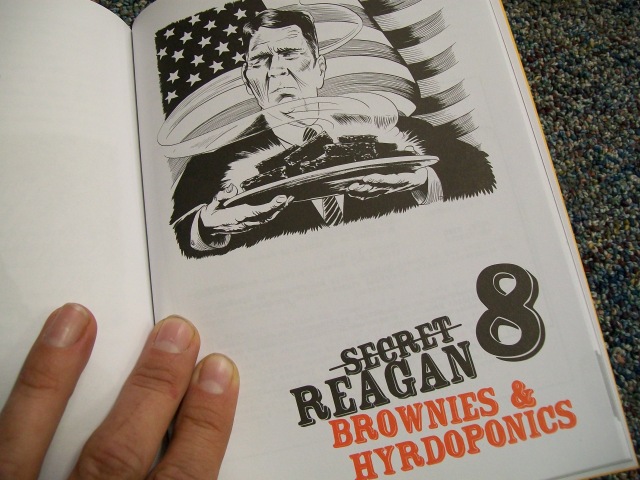
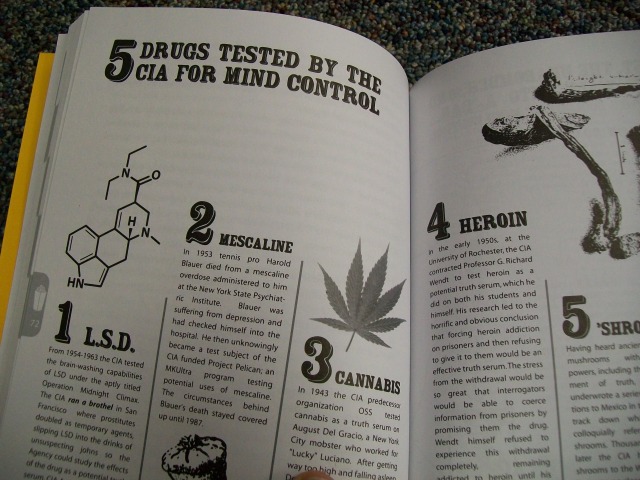
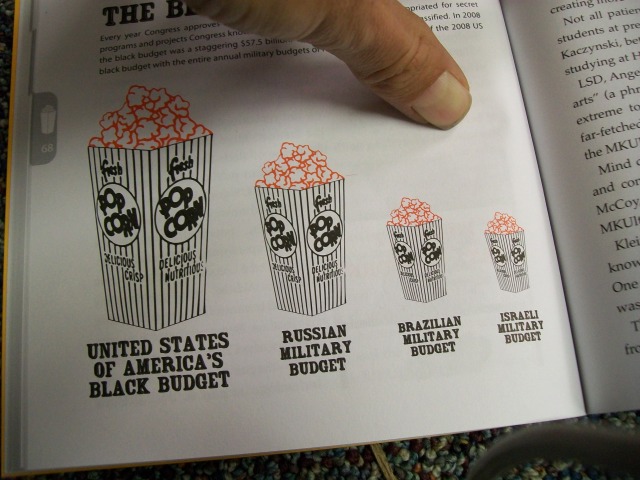

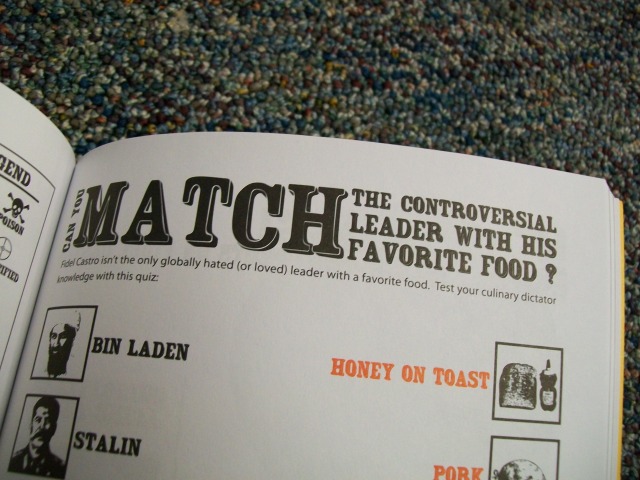
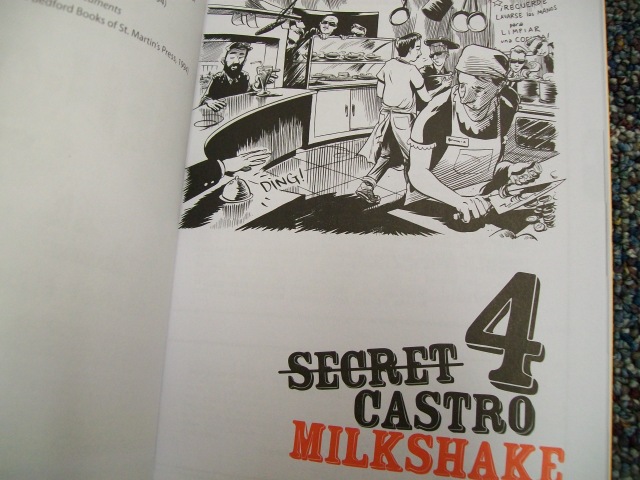
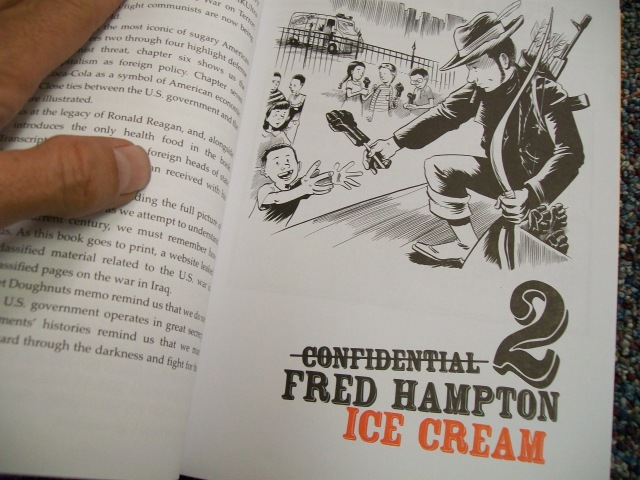

Nate Powell’s beautiful graphic novel follow-up to the Eisner award-winning Swallow Me Whole examines war and violence, and their trickle-down effects on middle America. As a gang of small-town kids find themselves reunited in adulthood, their dark histories collide in a struggle for the future. Any Empire‘s 350 illustrated pages follow three kids in a Southern town as a rash of mysterious turtle mutilations forces each to confront their relationship to their privileged suburban fantasies of violence. Then, after years apart, the three are thrown together again as adults, amid questions of choice and force, belonging and betrayal. Note: Like Swallow Me Whole, this book has an amazing-looking woven-cloth-style hardcover that feels like an old library book. Definitely something you’ll want to keep forever and read often. So awesome.
Get a copy of Any Empire here.









Hey pals!
Slingshot just sent us a bunch more colors for the large Slingshot planner! Order Slingshots here and see some photos of MicrocosmKansas’s own Danielle holding ’em below!
